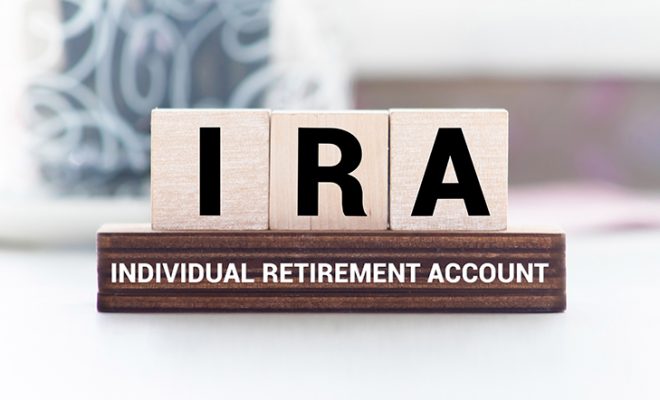401k and IRA 2023 Contribution Limits

The 401k and Individual Retirement Account (IRA) are, in more ways than one, an obvious choice for those planning for their retirement. Both plans are essential tools for retirement planning because they offer tax advantages, ease of investment, and uncomplicated contribution and withdrawal processes. While the 401k is a company-sponsored plan, the IRA can be opened through a broker, union, bank, or insurance company.
The contributions to a 401k or an IRA provide many tax advantages depending on their type. Traditional retirement plans are taxed in retirement but offer tax benefits on the contributions, whereas Roth retirement accounts offer tax-free withdrawals, but the contributions are made after paying tax. No matter what you choose, these two accounts can lower your taxable income and help you save more for retirement. Additionally, many employers offer an employer match on a 401k, which can help your savings grow faster. For those who do not have access to a 401k, the IRA can be a good option. They can also be ideal for those who want to save additional money for retirement over and above the 401k.
However, in order to use these two accounts effectively, it is crucial to understand the details of 401k plans and IRA options available to you, their contribution limits, and tax rules. You can consult with a financial advisor for personalized guidance on the same. However, before you do so, here are some things to know about IRA and 401k contribution limits in 2023.
IRA and 401k 2023 contribution limit by IRS
The contribution limits for 401k plans and IRAs are set by the Internal Revenue Service (IRS) and may differ from year to year. For 2023, the contribution limits for 401k plans have been increased. Here are the latest values:
- The contribution limit for 401k plans is $22,500 for the year 2023 for those under age 50. The 401k 2023 contribution limit for those over 50 is $30,000, including a catch-up contribution of $7,500. In 2022, the maximum 401k contribution was capped at $20,500 for those under 50, with an additional catch-up contribution of $6,500 for those aged 50 and above.
- The contribution limit for IRAs is $6,500 for the year 2023 for those under age 50 and $7,500 for those aged 50 and over. People aged 50 or more have a catch-up contribution limit of $1,000 in 2023, which is the same as in 2022. However, there has been a $500 jump in the limit for investors under 50 from $6,000 in 2022.
Reasons for the increase in IRA and 401k max contribution in 2023
The contribution limits for 401k plans and IRAs are adjusted for inflation each year by the IRS. If inflation increases, the contribution limits are also increased to account for the rise in the cost of living. This allows people to cater to their present purchasing powers. The higher the inflation, the lower the purchasing power of people, and vice versa. When inflation is high, people save less for their retirement as they have fewer means to cover their present needs and are unable to focus on the future. Fewer savings can contribute to financial stress and low financial security in the later years of life.
Hence, the IRS increases the contribution limits for retirement plans to encourage people to save more. Since 2022 witnessed high inflationary trends for several months, the IRS has taken cognizance of the extreme figures and adjusted the limits to allow people to save more for their futures.
Apart from inflation, Roth IRA contributions are also impacted by income limits. Income limits are decided on the basis of your Modified Adjusted Gross Income (MAGI). MAGI refers to your Adjusted Gross Income (AGI) after subtracting deductions and tax penalties. Here’s how the income limits affect your IRA contributions depending on your tax filing status in 2023:
|
MAGI for single filers |
MAGI for married individuals filing jointly |
MAGI for married individuals filing separately |
Maximum contribution for investors under the age of 50 |
Maximum contribution for investors aged 50 and older |
| Below $138,000 | Below $218,000 | $0 | $6,500 | $7,500 |
| $139,500 | $219,000 | $1,000 | $5,850 | $6,750 |
| $141,000 | $220,000 | $2,000 | $5,200 | $6,000 |
| $142,500 | $221,000 | $3,000 | $4,550 | $5,250 |
| $144,000 | $222,000 | $4,000 | $3,900 | $4,500 |
| $145,500 | $223,000 | $5,000 | $3,250 | $3,750 |
| $147,000 | $224,000 | $6,000 | $2,600 | $3,000 |
| $148,500 | $225,000 | $7,000 | $1,950 | $2,250 |
| $150,000 | $226,000 | $8,000 | $1,300 | $1,500 |
| $151,500 | $227,000 | $9,000 | $650 | $750 |
| $153,000 and above | $228,000 and above | $10,000 and above | $0 | $0 |
IRA phaseout limits
Not everyone can contribute to an IRA. You need to qualify to contribute to an IRA on the basis of your income. The more you earn, the less you are permitted to contribute to the account. The IRS uses IRA phaseout limits to restrict the amount of money you can contribute to an IRA to control the amount you can claim as a tax deduction. This helps them manage taxes and allows the government to earn more money through revenue from the tax. The phaseout limits are nothing but the amount reduced or phased out from your contribution. As of 2023, the phaseout limits for an IRA are as follows:
- Single taxpayers covered by a workplace retirement plan, such as the 401k, will have a phaseout range from $73,000 to $83,000. This has been increased from $68,000 to$78,000 in 2022.
- Married couples filing jointly will have a phaseout range from 116,000 to $136,000 in 2023 if the spouse contributing to the IRA also has a workplace retirement account. This has been increased from $109,000 to $129,000 in 2022.
- Married couples filing jointly will have a phaseout range from $218,000 to$228,000 in 2023 if the spouse contributing to the IRA does not have a workplace retirement account but is married to someone who does. This has been increased from $204,000 to $214,000 in 2022.
- Single tax filers and heads of households will have a phaseout range from $138,000 to$153,000 in 2023. This has been increased from $129,000 to $144,000 in 2022.
- Married couples filing jointly will have a phaseout range from $218,000 to $228,000 in 2023. This has been increased from $204,000 to$214,000 in 2022.
- Married individuals filing a separate return covered by a workplace retirement plan will have a phaseout range between $0 and $10,000 in 2023. This is not subject to an annual cost-of-living adjustment.
SPONSORED WISERADVISOR
How can you make the most of a 401k and an IRA in 2023?
You can make the most of your retirement plans by taking advantage of the latest contribution limits and contributing up to the maximum limit permitted for the concerned year. Maximizing your contributions to your 401k and IRA may not always be feasible, depending on your financial situation. You may have several other investments and savings as well as expenses to cater to. Moreover, some financial products may deliver higher returns than the ones available in these accounts. Hence, you can consider allocating more of your money to other investment options based on your goals. However, if you have extra income, you can go ahead and benefit from maximizing your contributions.
Maximizing contributions to your 401k and IRA offers numerous tax benefits. Contributions to traditional accounts are made from your pre-tax dollars. This allows you to lower your taxable income and save more for future goals like retirement. Additionally, Roth IRA contributions are made with after-tax dollars. So, your withdrawals are tax-free in retirement. You can choose from either of these types based on your tax situation and make a suitable decision.
Maximizing your contributions also offers the chance to earn through employer matches. Many employers offer a matching contribution to their employees. By maximizing your contributions, you can take full advantage of this benefit and grow your savings at a faster pace. A 401k account is offered by most employers. So, even if you change your job, continuing to maximize your savings can be an excellent way to keep your savings secure. Most employers offer the option to roll over the 401k.
Young investors who prioritize maximizing their retirement accounts can get a good jump from the very beginning. The earlier you start saving for retirement, the more time your money has in the market. Moreover, it also grows through compound interest. This builds up your retirement savings over time. Further, it lowers financial stress and the burden of preparing for your retirement in the later stages of life. By maximizing contributions to your 401k and IRA accounts, you can potentially have more money available to you in retirement.
Investors who may not have saved as much in their younger years also benefit by maximizing their contributions later in life. If you have missed the opportunity to save enough at the beginning of your career, IRA catch-ups, as well as maxing out 401k contributions in 2023 for those over 50, can help you make up for the lack of savings. IRA and 401k 2023 catch-up limits can help you save $1,000 plus $7,500 extra, which is a considerable sum of money.
Things to note when investing in an IRA and 401k plan in 2023
Here are a few strategies that you can use for your 401k and IRA accounts in 2023:
1. Use the employer match:
If your employer offers a matching contribution to your 401k plan, make sure to contribute enough to take full advantage of this benefit. Employer matches are generally a percentage of your contribution. The more you contribute, the better match you can get.
2. Use an IRA and 401k together:
Consider using an IRA and a 401k plan if you are eligible to contribute to both accounts. If you have a traditional 401k account, you can use a Roth IRA for tax diversification. Your Roth IRA withdrawals will be tax-free in retirement. This can be a valuable addition to your retirement income, mainly because most of your other income, including withdrawals from the 401k, will be taxed in the future.
3. Diversify your investments:
It is essential to diversify your assets within your 401k and IRA accounts to lower risk and enhance your returns. You can invest in a mix of equity, debt, and other types of securities to gain maximum exposure to the market and minimize risk at the same time. It is also important to take a look at your portfolio outside of these accounts. Ensure there is no overlapping and that your investments include a range of stocks, bonds, and others spread over different sectors, geographies, market capitalizations, and tax treatments.
4. Review and rebalance your portfolio:
Review your investments and make sure they align with your retirement goals, income, and risk appetite. It is important to rebalance your portfolio from time to time to maintain your preferred level of risk. The beginning of the year, when most contribution limits and rules are revised, can be a good time to review your portfolio and make necessary changes to optimize returns.
5. Hire a financial advisor:
Consider getting in touch with a financial advisor to create a comprehensive retirement plan that focuses on your unique financial goals, income, risk appetite, tax situation, and liabilities. Like the contribution limits, your individual goals and preferences will also likely change over time. You may have newer goals, financial responsibilities, and liabilities. Your 401k and IRA savings should align with these.
To summarize
Remember to make a note of the IRA and 401k contribution limits in 2023 to ensure you contribute as per the new rules. In addition to this, take some time to diversify your portfolio optimally. It is also important to contribute regularly. Consistency can be the most crucial thing to focus on in long-term savings. You can create a budget and allot a fixed portion of your income for retirement savings. Further, keep in mind that inflation can significantly impact your retirement savings over the long term. Therefore, it is essential to regularly review your retirement plan with a financial advisor and target the loopholes, if any. Use the free advisor match service to get matched with an advisor who can help you understand the 2023 contribution limits, how they may impact your personal retirement plan, and present and future goals. Answer a few simple questions, and the tool can match you to 1-3 advisors that are best suited to meet your financial requirements.
For further information on creating a suitable retirement plan for your unique financial requirements, visit Dash Investments or email me directly at dash@dashinvestments.com.
About Dash Investments
Dash Investments is privately owned by Jonathan Dash and is an independent investment advisory firm, managing private client accounts for individuals and families across America. As a Registered Investment Advisor (RIA) firm with the SEC, they are fiduciaries who put clients’ interests ahead of everything else.
Dash Investments offers a full range of investment advisory and financial services, which are tailored to each client’s unique needs providing institutional-caliber money management services that are based upon a solid, proven research approach. Additionally, each client receives comprehensive financial planning to ensure they are moving toward their financial goals.
CEO & Chief Investment Officer Jonathan Dash has been covered in major business publications such as Barron’s, The Wall Street Journal, and The New York Times as a leader in the investment industry with a track record of creating value for his firm’s clients.











